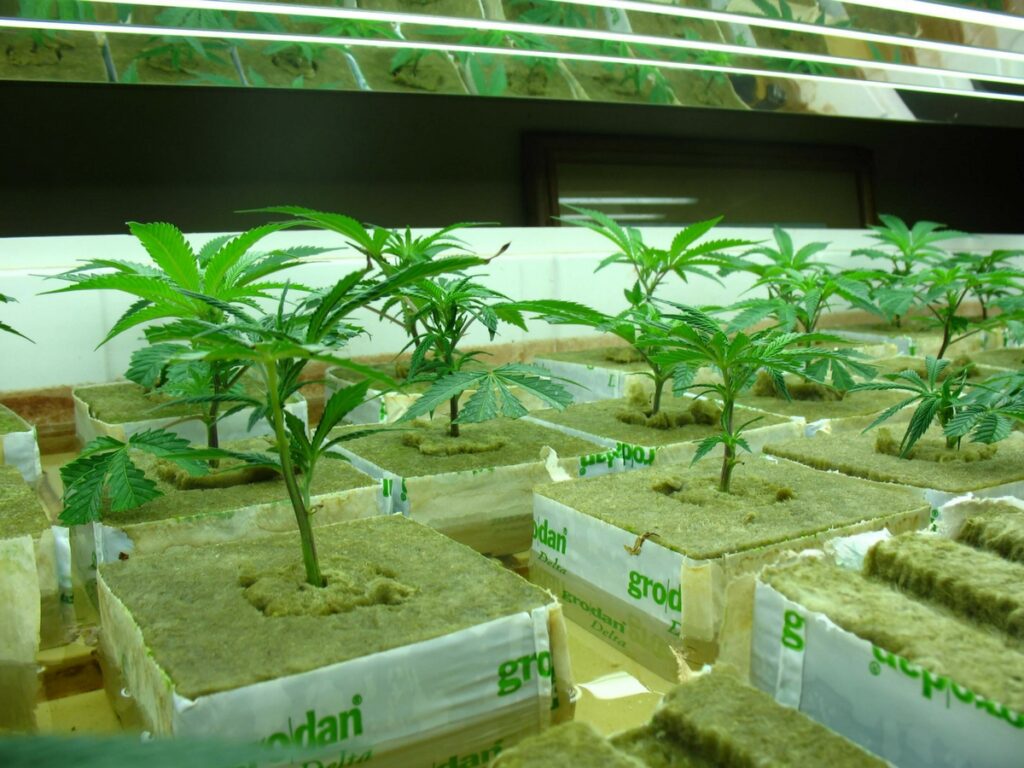
Marijuana in the Netherlands
It wasn’t any different in the Netherlands. It’s not exaggerated to suggest that a considerable portion of the wealth of the Golden Age came from the cultivation of hemp. Some 11,000 ships sailed at that time, rigged with rope and sails made of hemp. Hemp was the leading agricultural product in the Netherlands; the stalk was primarily valued. The stalk, only from the male plant, was processed into hemp fiber. The female plants were used for other purposes. These were harvested later, and then threshed. The seed was used as bird feed, or was processed into oil, green soap, and raw material for paint. For the latter application, a thick pulp remained which served as animal food. After the Golden Age, less and less hemp was cultivated in the Netherlands. Competition arose from cheaper Russian hemp, along with other fibrous materials such as coconut and sisal. The steam engine made its entry, so less rope and sails were needed in the shipping industry.
Just as in other countries, the medicinal effects of the plant did not go unnoticed by its growers. Rumours had it that witches used hemp in their witches’ salves. The effects of hemp had already been described in “The Herb Book” by Rembert Dodoens in the sixteenth century.
Using cannabis products for pleasure really didn’t come about in the Netherlands until after the Second World War. After jazz, and later the hippie influences, marijuana smoking blew over from America. In 1962, Simon Vinkenoog a Dutch liberated poët, wrote: ‘In ten years, this will be as common as drinking whiskey or beer, or just as normal as an ordinary cigarette. And it doesn’t give you lung cancer’. In the first decades, youbetter smoked imported hash than ‘Nederweed’. Still, growing at home was so energetically pursued, that, thirty years later, Dutch weed ranks as the best in the world. There has been improvement, cross breeding, and cloning; fighting the currents, at first. Until the mid-Seventies, growing, possessing, and use of soft drugs was still punishable. Not until after the mid-Seventies tolerated points of sale originated – the coffeeshops.
And now it seems there’s no stopping it. more and more of people use soft drugs, and more and more people try to hold down the costs of soft drug use by going to work for themselves. Sometimes, purely for their own use, sometimes to earn a few cents, sometimes to get rich.
This book has been written for the growing group of people who want to apply themselves to home cultivation. Now, this is the place to give a few warnings. In the first place, it may be generally presumed that smoking is not considered the best thing for your health. In the second place, even though the Dutch government has become more open-hearted in its tolerance of the growth, possession, and use of cannabis, the substance still stands on List 2 of the law on narcotics.
That doesn’t pose a problem anymore, if it’s for your own use, but for large-scale growing, possession, and dealing – it still does. Grow-gardens, green-houses, and plantations are still searched out and destroyed, and a considerable fine usually follows. Ultimately, every home grower has to gain knowledge and experience before there can be talk of a good yield. So, don’t get discouraged too quickly if it doesn’t go perfectly in the beginning.

